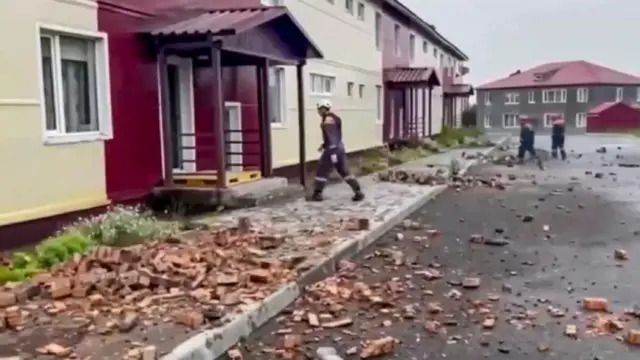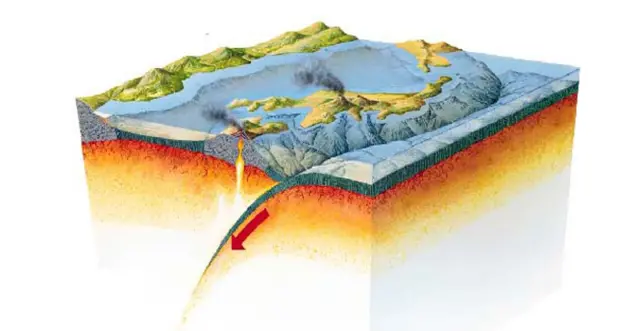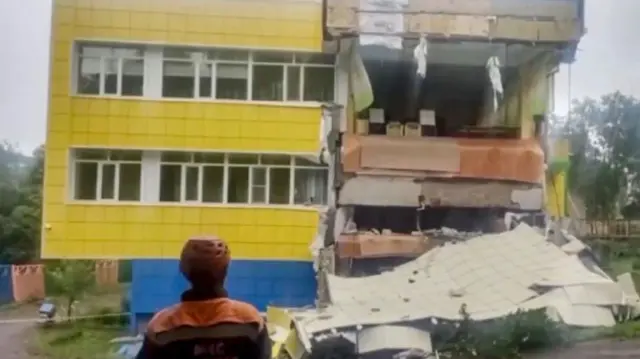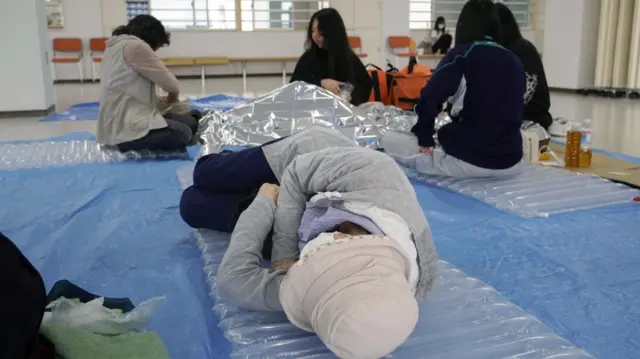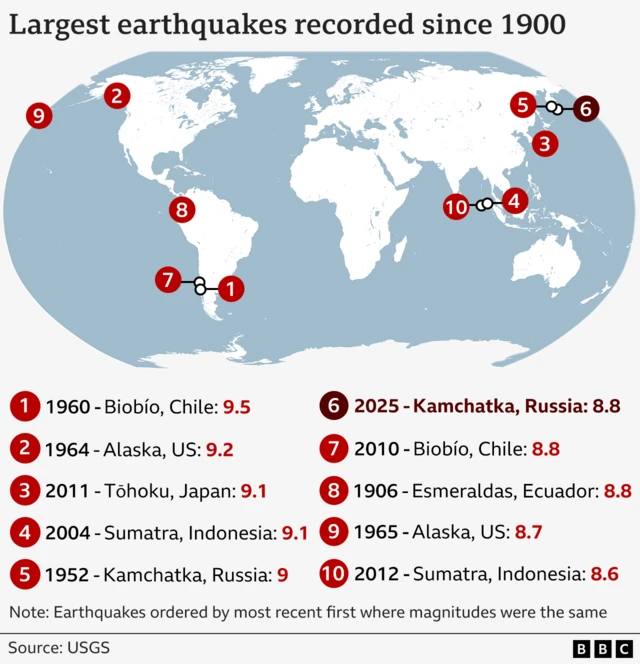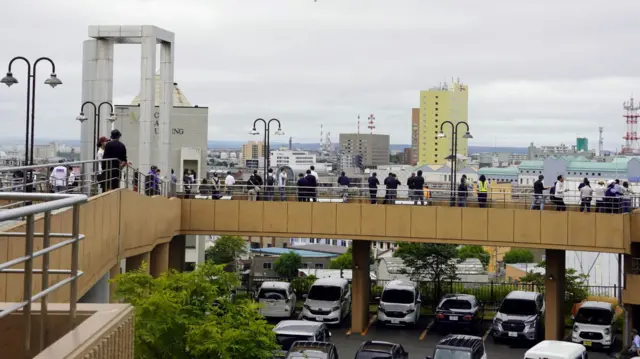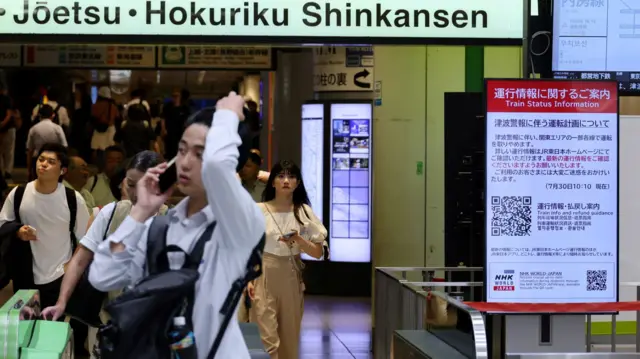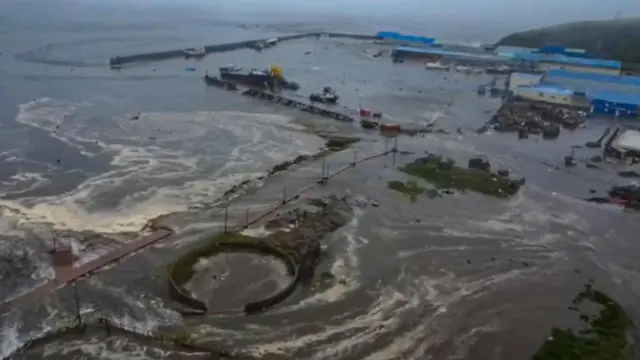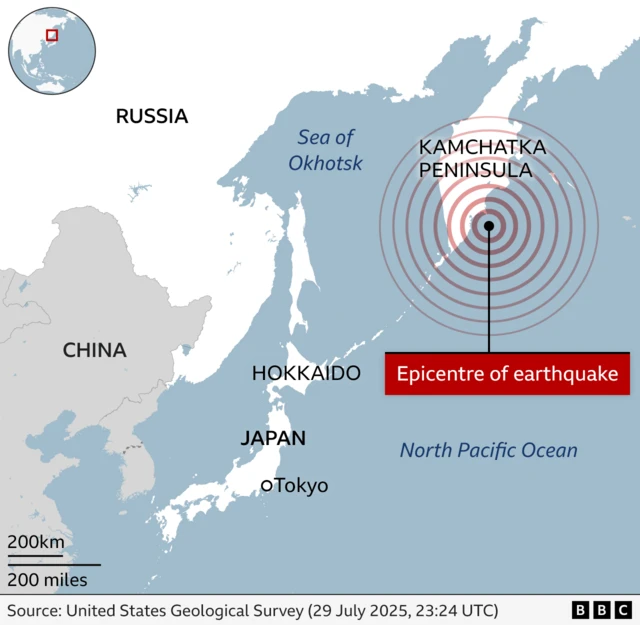No impact on nuclear power plants along Pacific coast - UN nuclear watchdogpublished at 12:49 BST 30 July
Initial reports indicate there has been "no safety impact for nuclear power plants along the Pacific coast," the UN's nuclear watchdog says.
The International Atomic Energy Agency says it is in contact with Japanese national authorities about the earthquake and resulting tsunami.
Authorities were on high alert due to the earthquake, with workers at the Fukushima Daiichi and Fukushima Daini nuclear plant told to evacuate.
